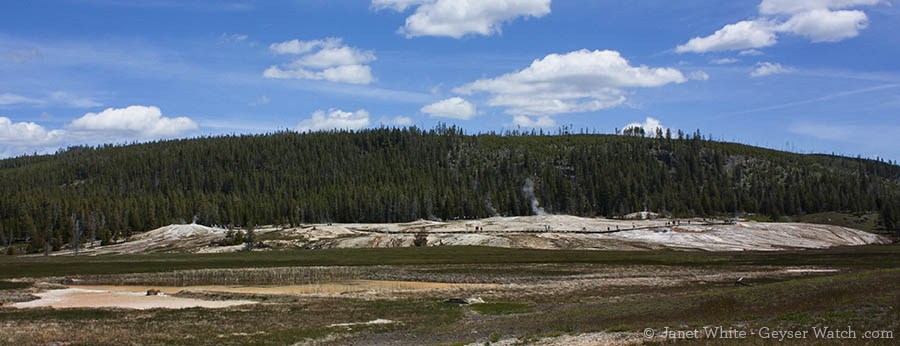
By Janet White
YELLOWSTONE NATIONAL PARK — While waiting for an eruption of Old Faithful in Yellowstone National Park, you might notice people walking along boardwalks on a hill in the distance. That’s Geyser Hill, one of the most amazing patches of thermal activity in the world. In this small area, there are about 30 geysers, some large and others small, along with many hot springs. Wandering among the thermal features on Geyser Hill is a great way to spend time in Yellowstone before or after Old Faithful erupts, or a wonderful spot to learn more about geysers if you’ve already seen Old Faithful a few times.
The easiest way to reach Geyser Hill is to walk around the benches at Old Faithful — you can go in either direction. If you head around by Old Faithful Lodge, you’ll drop right down to the river bridge, and then up to Geyser Hill. If you walk around toward Old Faithful Inn, you need to go a bit farther until you reach a paved path that loops back to a viewing site for Beehive Geyser. That route takes you past some hot springs before meeting up with the other path and dropping down to the river bridge.
On average, most people take 30 minutes to an hour to make the Geyser Hill loop and return to the benches by Old Faithful. Of course, that depends on whether you keep walking, take you time or wait for a particular geyser to erupt. Since Old Faithful erupts about every 90 minutes, if you’ve just missed Old Faithful, this might be a great loop walk to try. Old Faithful is visible from much of Geyser Hill, so depending on the timing, you may also get a chance to witness it from a different vantage point.
5 great geysers to see on the Geyser Hill loop:
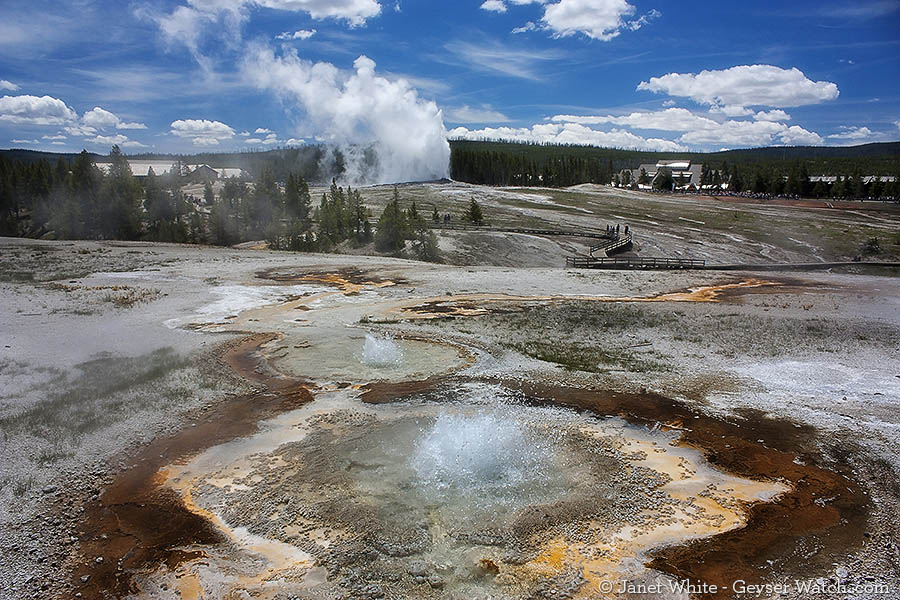
Anemone Geyser: This is a delightful smaller geyser that gives you two geysers for the price of one. Big Anemone (closest to the boardwalk) drains with the same gurgle you hear when emptying out the bathtub. Last year it was about 12-15 minutes from the start of Big Anemone’s eruption to the start of the next one, with Little Anemone erupting in between. Anemone shows the cycle typical of many geysers — the basin fills with water, then the eruption starts and finally it drains back down the vent.
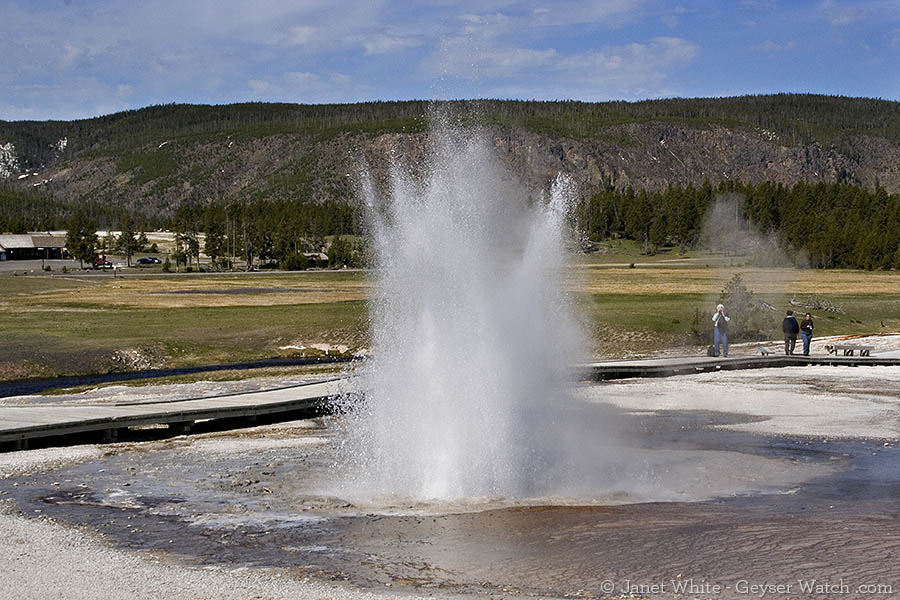
Plume Geyser: This one erupts about every hour, give or take a few minutes, which is more often than Old Faithful. There’s no warning, just the sound of a rushing water, then Plume Geyser starts its eruption which comes in bursts with pauses in between. Each burst is slightly weaker than the previous. It typically gives 4 or 5 bursts, but it can be more or less.
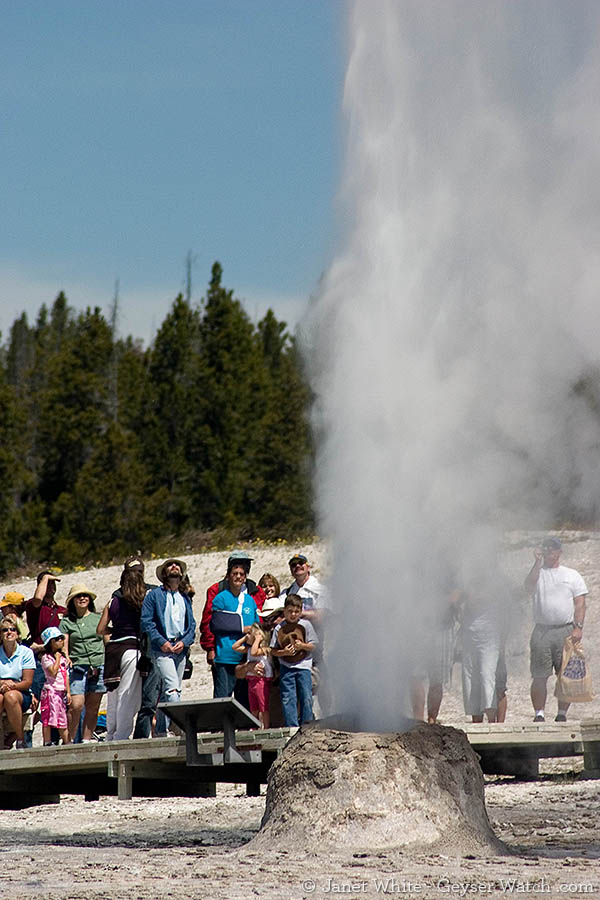
Beehive Geyser: Beehive is a favorite of many because of its lovely narrow, tall jet of water. This geyser usually erupts only once during daylight hours, and it is often (but not always) preceded by its indicator geyser — a smaller geyser next to the big cone. The indicator usually erupts anywhere from a few minutes to 20 minutes before Beehive. Beehive is taller and lasts longer than Old Faithful, and you get the added benefit of the boardwalk being closer. The eruption ends with a rather loud steam phase that’s best heard from the boardwalk on Geyser Hill. Beehive Geyser isn’t regular enough to give a prediction. Lately, it has averaged about 12-15 hours between eruptions, with a few extra-long waits of 17 to 19 hours now and then. You can check at the Old Faithful Visitor Center to see if they know when it last erupted.
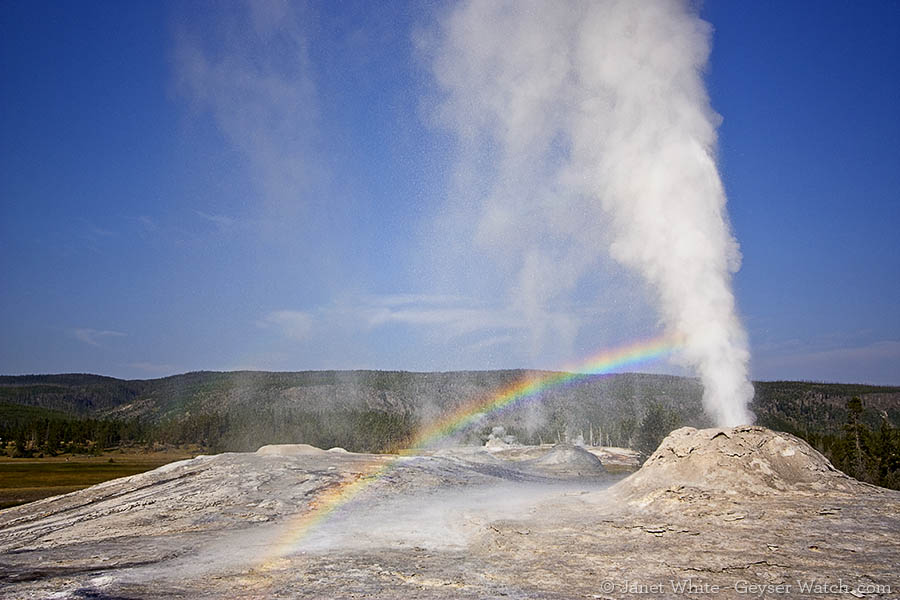
Lion Geyser: When active, Lion has multiple eruptions in a “series” that are each about one hour apart. This spring, Lion seems to give us long series of seven or more, but the more eruptions it has during a series, the longer it seems to take for it to recharge itself for the next batch of eruptions. It can be one or two days between active times.
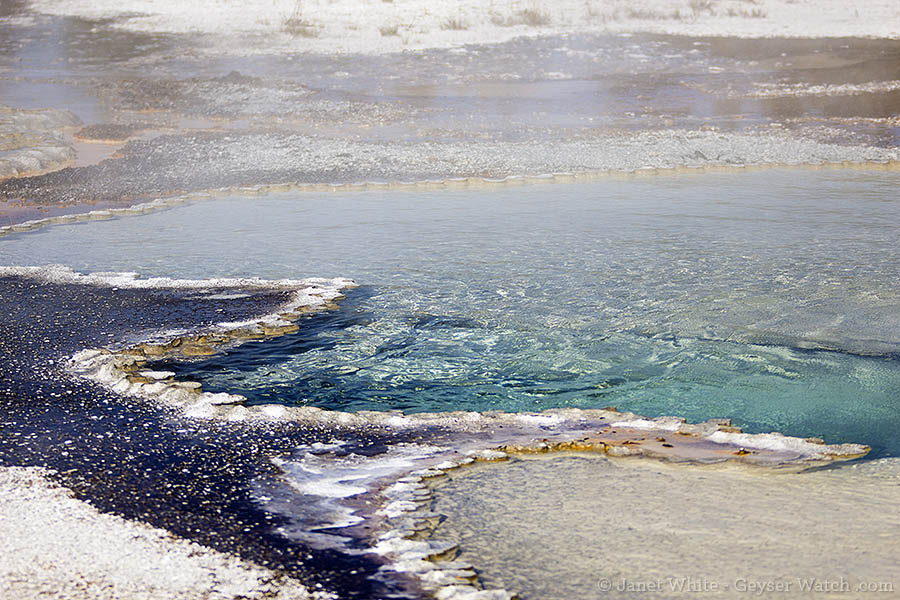
Doublet Pool: This gorgeous hot spring doesn’t erupt, but it does “thump.” About every half-hour or so, the water level rises to the top of the lacy, scalloped edge and then the thumps start. The thumps come from large gas bubbles that collapse below ground. You can see this on a smaller scale by watching bubbles on the bottom of a pan of water heating on the stove — some of those bubbles will also collapse, and won’t make it to the surface. Watch the level of the water at Doublet and give it a bit of time to see whether the water is rising or falling. Have a seat on the benches, or just put your hand on the boardwalk to feel the thumps that match the pulses of the waves on the surface of the water. If few people are around, you can hear them, too.
This relatively short loop around Geyser Hill gives a good sampling of the geysers and hot springs which make Yellowstone so unique. Take your camera and make use of the maps, interpretive rangers and other resources at the Old Faithful Visitor Center to learn more about the amazing thermal features throughout the park. Most importantly, stay on the boardwalks and observe the warning signs and other posted notices. Geysers emit scalding hot water and can be dangerous and unpredictable. What may seem like stable ground around thermal features is often a thin crust of minerals that won’t support your weight, or that of children or pets.
Janet White is the creator of GeyserWatch.com
If you go…
For more information, call the Old Faithful Visitor Center at 307-344-2751 or view an interactive version of the map below on the National Park Service website.

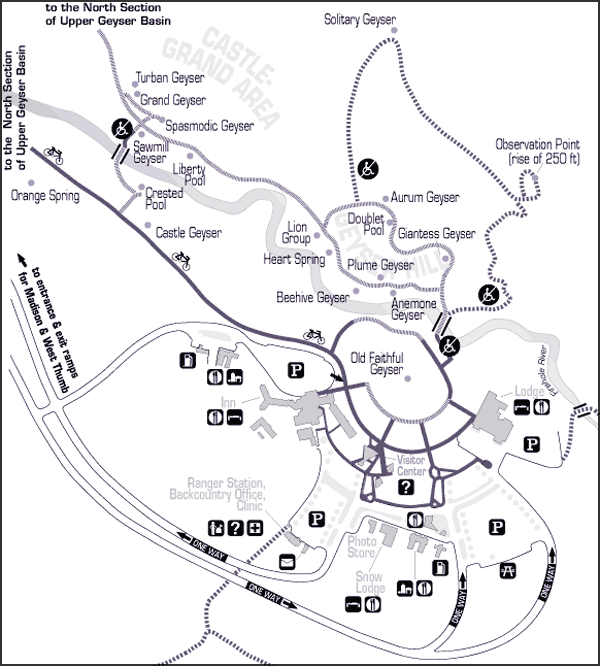
Thank you for that – now I know what I saw – it all looks different in winter. What an amazing place!!
Yes, the Park in winter has such a different, yet also gorgeous look! So glad this article helped out – it’s much more interesting to see things once you know a little more about them.
If you (or any reader) has questions about the thermal features, I’ll do my best to answer them in the comments and/or in upcoming articles.